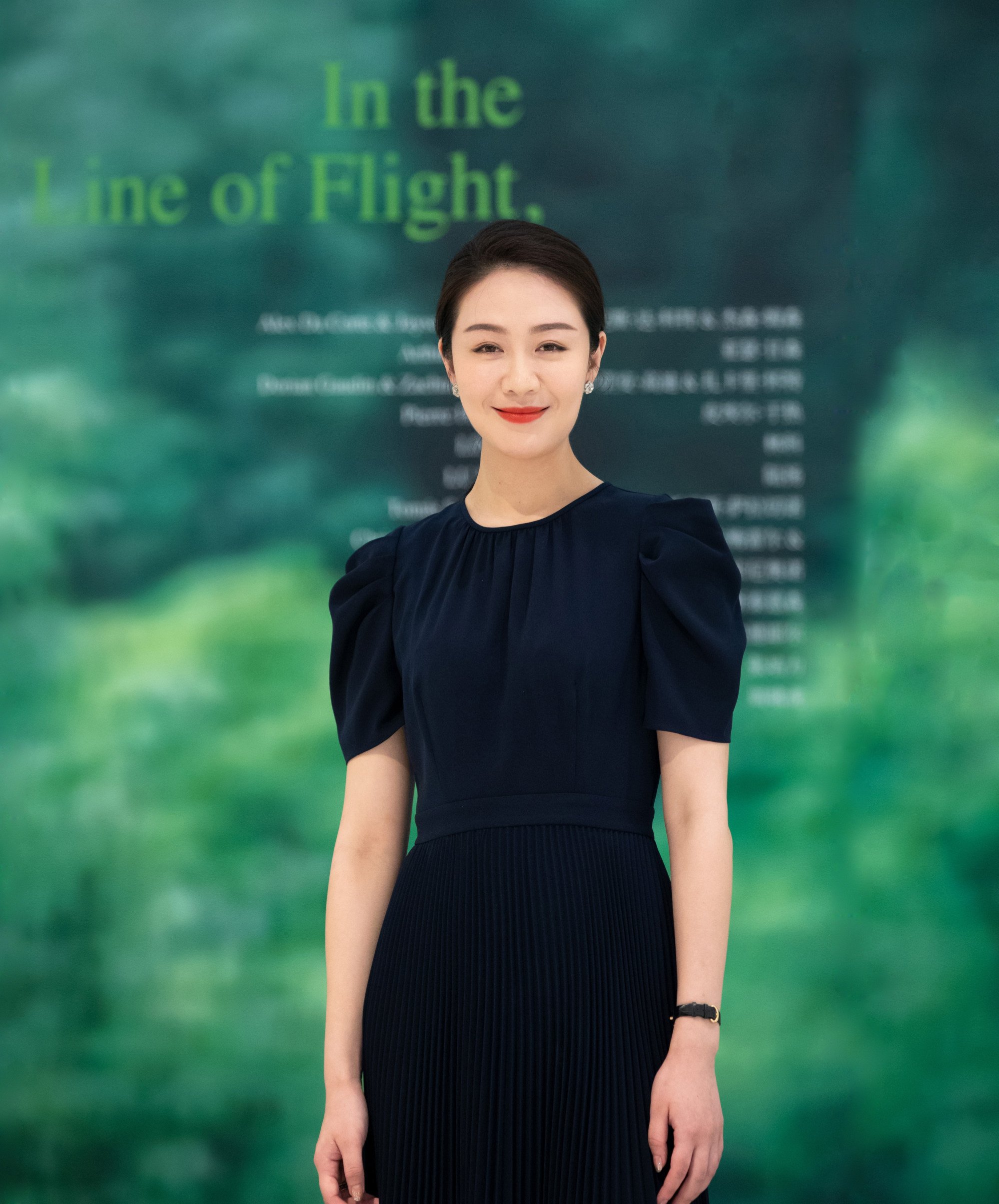“I went to see Deji’s show recently and it blew my mind. The resources and the commitment are solid. It’s not just because the company has lots of money to buy art. The museum is very serious about its programmes and publications,” she adds.
‘Like a puzzle’: Artist in Hong Kong debut likens city to her 3D paintings
‘Like a puzzle’: Artist in Hong Kong debut likens city to her 3D paintings
The museum is owned by the Nanjing-based conglomerate Deji Group, controlled by brothers Wu Tiejun and Wu Tiemin.
Deji Art Museum built up its collection – which comprises more than 10,000 works – over two decades, says the museum’s director, Ai Lin. Deji Group started out collecting ancient Chinese art and artefacts and those related to Nanjing, including Ming dynasty-style furniture and Buddhist statues.
About 10 years ago, the conglomerate began adding modern and contemporary art to its collection to reflect the growing prominence of Nanjing and its development as a modern city, she says.
After Deji Group management felt that its collection was extensive and “mature enough”, Ai says, they decided to open a museum in 2017.

The museum is on the 8th floor of Deji Plaza, a high-end shopping complex on Zhongshan Road. Nanjing Museum, the Jiangsu Provincial Art Museum and Six Dynasties Museum, showing artefacts from 3rd century to 8th century China, are nearby.
The reason for opening the museum in a shopping centre was to reach audiences who might not be familiar with art, Ai says.
“Some people might say that we’re located in the complex to bring foot traffic to the mall, but actually this mall’s foot traffic was already plentiful,” she says. It sees at least 50,000 people per day during weekdays and as many as 220,000 people per day during holidays.
In the early days, the museum relied on that foot traffic for its visitors, Ai says. Now, about 60 per cent of museum visitors come specifically for the art.
The museum gets around 10,000 visitors each weekday, and some 30,000 a day during weekends and holidays, she says. It has logged around 273,000 visitors to the “Nothing Still About Still Lifes” exhibition since it opened on August 26.
In Nanjing, OCAT’s contemporary art exhibition space closed in 2020, along with many others elsewhere that the Shenzhen-based, state-owned developer Overseas Chinese Town used to run.
Financial sustainability is paramount to the survival of private art museums in China. “We really want to make it accessible to visitors, but sustaining [the museum] is also important,” Ai says.
Thus displays in the Deji Art Medium’s public area – which include works by Yoshitomo Nara and Refik Anadol – are free to view, while the museum charges 180 yuan (US$25) for an all-access ticket to thematic exhibitions including the “Nothing Still About Still Lifes” show.
That exhibition is the first in a planned series of “World of Flowers” shows and features works by leading Chinese and Western artists created from the mid 19th century onwards.
It is curated by art historian Joachim Pissarro, the grandson of Danish-French Impressionist painter Camille Pissarro, one of whose works is included in the exhibition.
The exhibition is in four parts. The first, called “Cross-Pollination”, is a nod to the many Chinese artists who moved to France to live or study.
Works by abstract artists Wu Dayu and Sanyu also feature in this section, as does art by Fan Tchunpi, known as the most prominent female artist of her time in the East.
Also featured here is Picasso’s Vase de Fleurs, which the Spanish artist painted when he was 20 in 1901, the year of his first solo exhibition in Paris and shortly before his “blue period” began.
The second part of the exhibition, “Avant-Gardening”, is an ode to the late 18th and early 19th centuries, when the European bourgeoisie adopted gardening as a hobby.
Among the art visitors see here is L’Escalier (1878) by Monet, painted shortly after he moved to Vétheuil, a commune on the River Seine northwest of Paris, and Chrysanthemum, a naturalistic 1909 work by the Dutch painter Piet Mondrian, better known for his geometric abstract art.
Part three, “Meta-Flowers”, explores how artists reimagined flowers and gave them new meaning.
Among the works featured here is a Georgia O’Keeffe painting, Anthurium (1923), which was discovered behind another painting that was being restored and has never been exhibited before.
“The people who have researched O’Keeffe say that, because she was a person with a sense of fun, they don’t think that it was covered because she thought the work was bad,” Ai says. “Rather, it’s more likely that she left the painting as a surprise.”
The final part of the exhibition, “Breakout Blooms”, is the most open-ended, and shows how modern and contemporary artists have experimented with the still life in imaginative and critical ways.
Dance of Flowers (1970) by French-Chinese artist Lalan, is a black-and-white painting that evokes emotion and movement with its swirling lines, and an example of how she explored the tensions of life and combined them with dance.
“Lots of people know Lalan because she was Zao Wou-ki’s wife, but she was also a multidisciplinary artist who sang and danced,” Ai says. “And the works that she made then, if you view them now, they still feel very contemporary.”
The Deji Art Museum has high hopes for an exhibition that presents a contemporary and cross-cultural perspective on art – betting that it will draw visitors from near and far.
“For people from other countries and cities, we hope that they can understand Nanjing through the Deji Art Museum,” says Ai.
Additional reporting by Enid Tsui.
“Nothing Still About Still Lifes: Three Centuries of Floral Compositions”, Deji Art Museum, 8/F, Phase II, Deji Plaza, No. 18 Zhongshan Road, Nanjing, China, Mon 2pm to 10pm, Tue to Sun 10am to 10pm. Until March 17, 2024. Tickets are 180 yuan and can be bought via WeChat.

